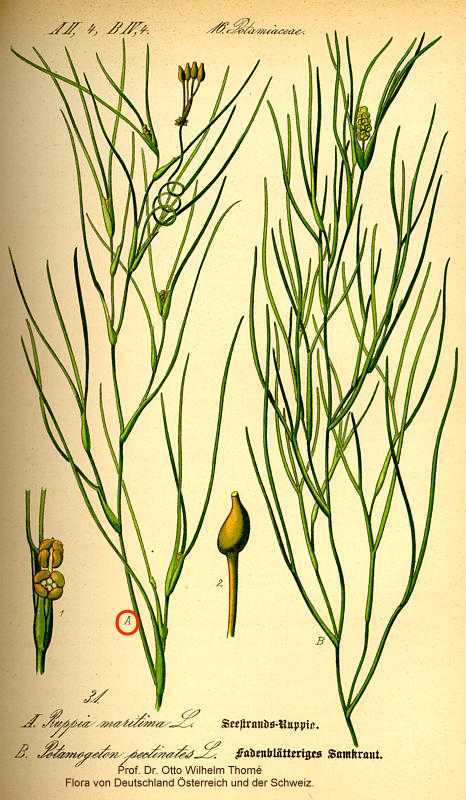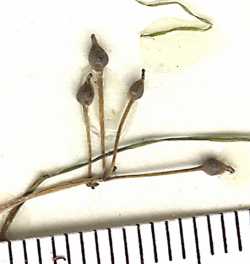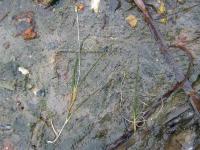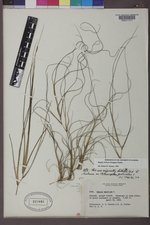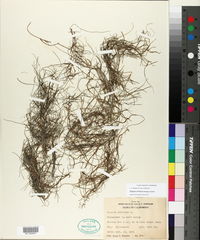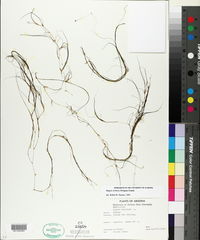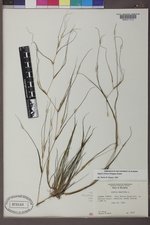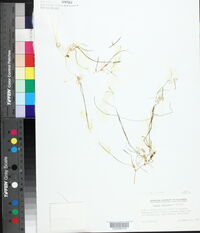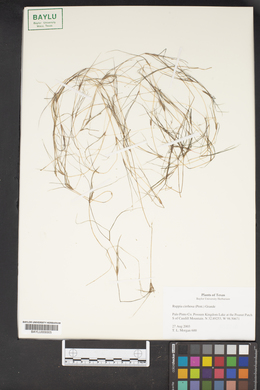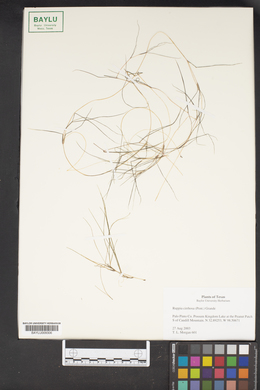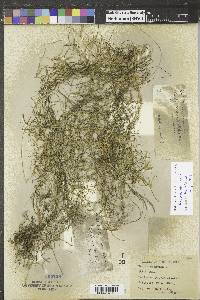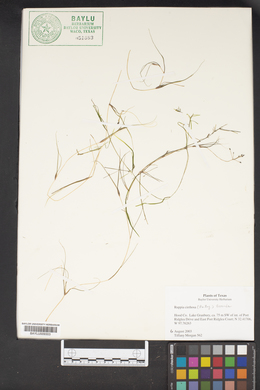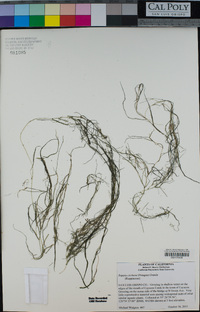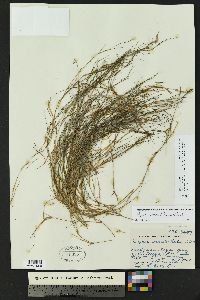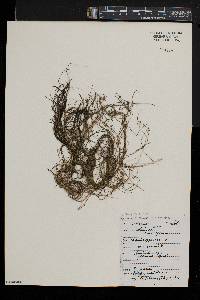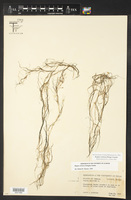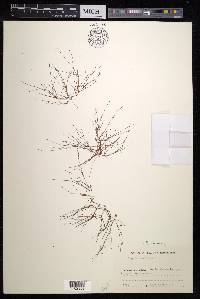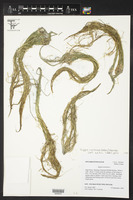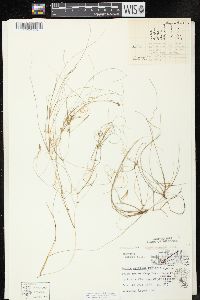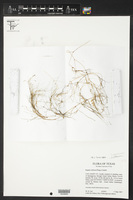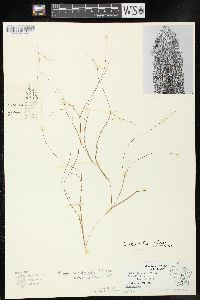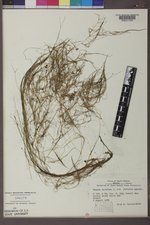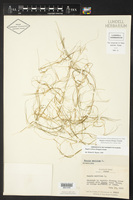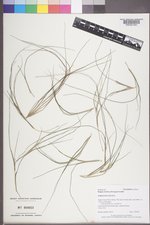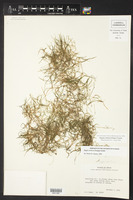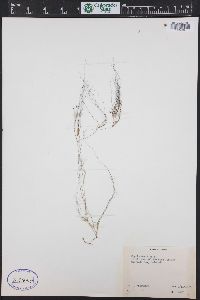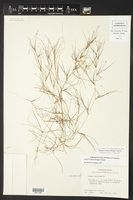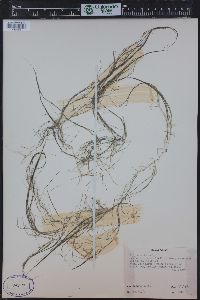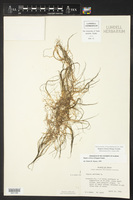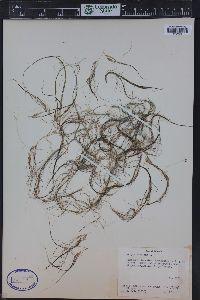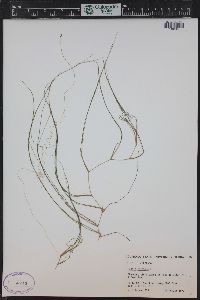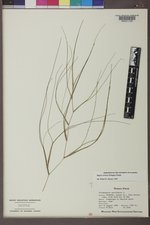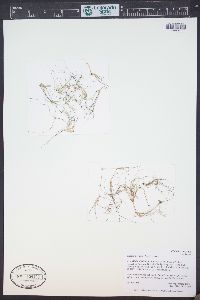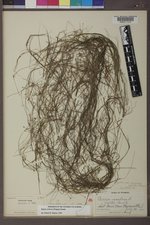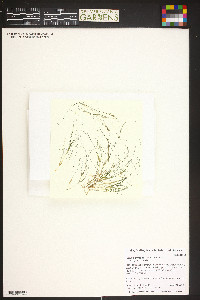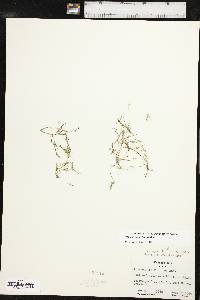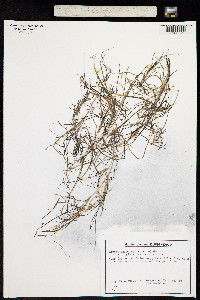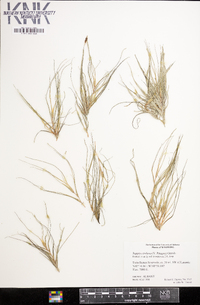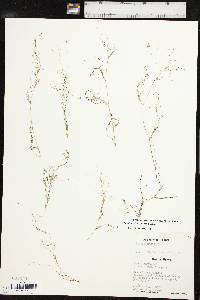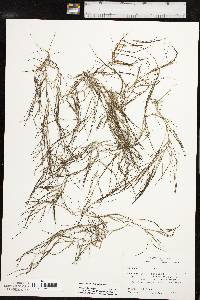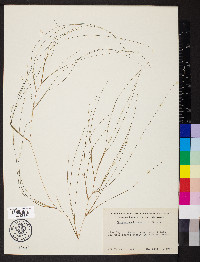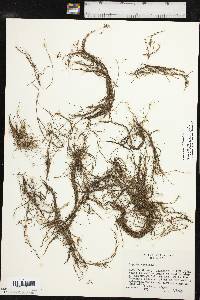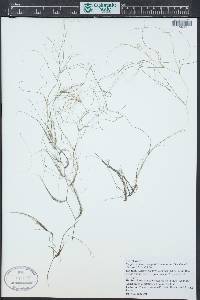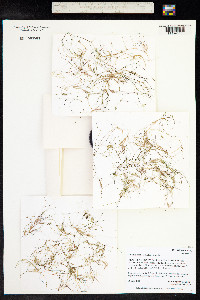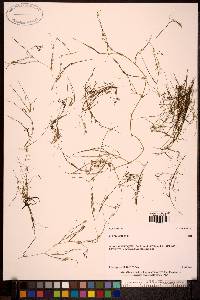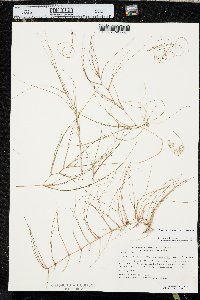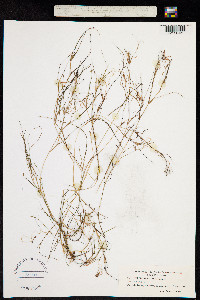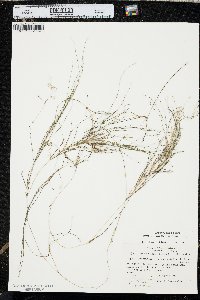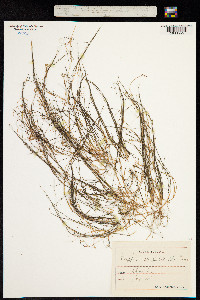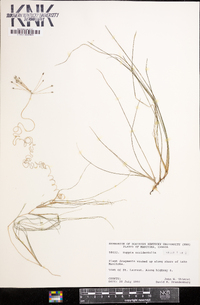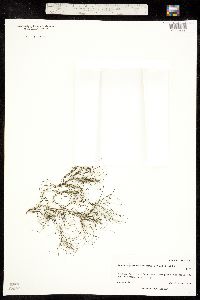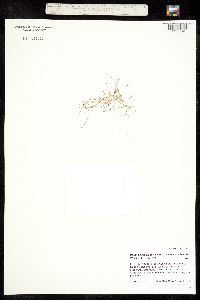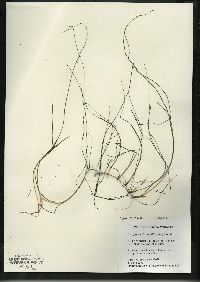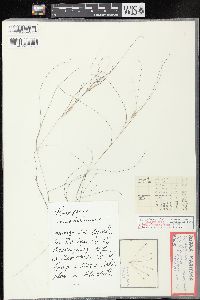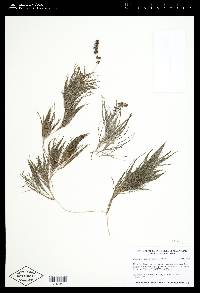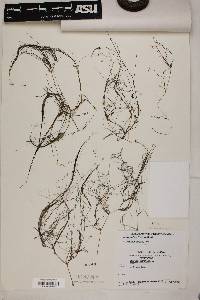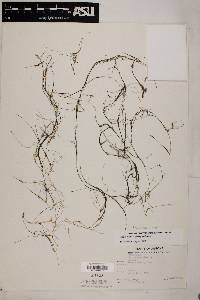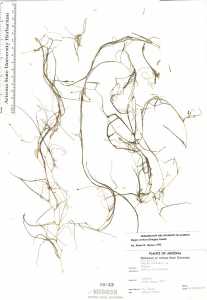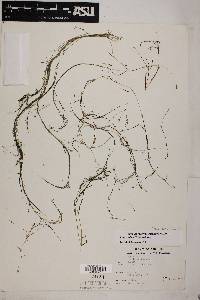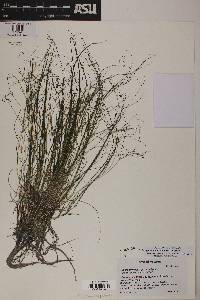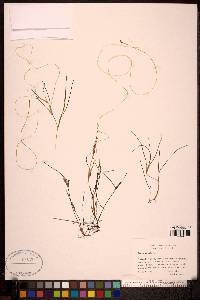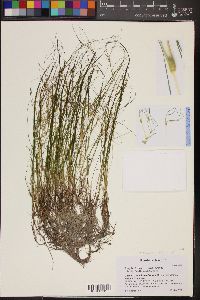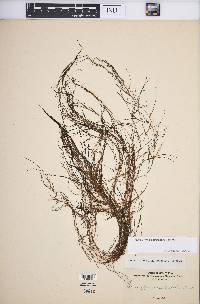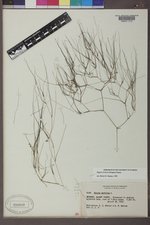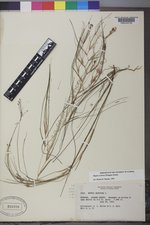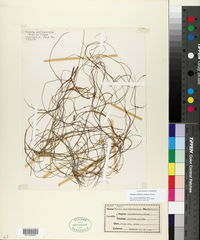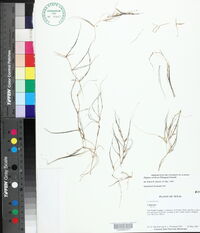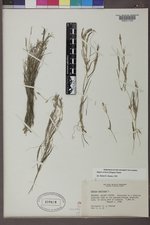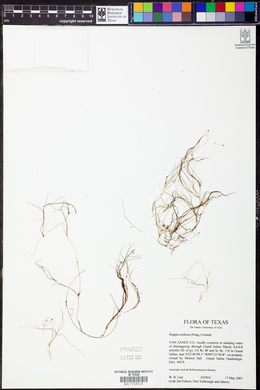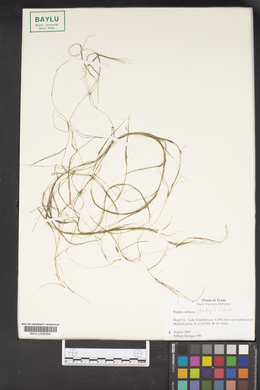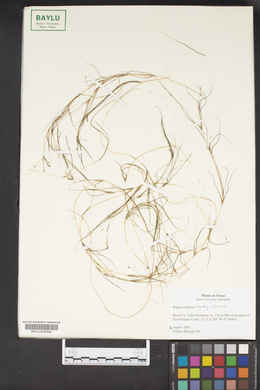Ruppia cirrhosa
|
|
|
|
Family: Ruppiaceae
Spiral Ditch-Grass, more...spiral ditchgrass
[Ruppia cirrhosa subsp. occidentalis (S. Wats.) A.& D. Löve, moreRuppia lacustris Macoun, Ruppia maritima var. occidentalis (S. Wats.) Graebn., Ruppia maritima var. spiralis Morris, Ruppia occidentalis S. Wats., Ruppia spiralis L. ex Dumort.] |
Stems to 55 cm × 0.1--0.3 mm. Leaves 3.2--45.1 cm; blade 0.2--0.5 mm wide, apex acute. Inflorescences: peduncles with 5--30 coils, 30--300 × 0.5 mm. Flowers: pistils 4--6. Fruits 1.5--2 × 1.1--1.5 mm; gynophore 2--3.5 cm; beak lateral, erect, 0.5--1 mm. 2n = 40 (Europe). Flowering summer--fall. Shallow to deep fresh waters of lakes with high concentrations of sulfur or calcium; 300--2500 m; Alta., B.C., Man., N.W.T., Sask., Yukon; Alaska, Ariz., Calif., Colo., Ill., Kans., Mich., Minn., Mo., Mont., Nebr., Nev., N.Mex., N.Dak., Ohio, Okla., Oreg., S.Dak., Tex., Utah, Wash., Wyo.; West Indies; Central America; South America; Europe. Ruppia spiralis Linnaeus has occasionally been used for this taxon in North America. Linnaeus, however, had never published that name ( J. T. A. Verhoeven 1979). Ruppia cirrhosa is, indeed, the correct name for the taxon (J. C. Gamerro 1968). An implication that the North American material with long, spiraling peduncles is different from the European material of Ruppia cirrhosa stems from the statement that R. occidentalis occurs in inland lakes (J. T. A. Verhoeven 1979). No differences between European R. cirrhosa and the North American material are listed, however. In fact, a comparison of the Verhoeven's descriptive discussions for of R. cirrhosa (Verhoeven 1979) with the North American material shows that the two are the same. The genus should be studied on a worldwide basis. Until further studies indicate otherwise, I am considering North American and European material to be conspecific.
FNA Volume 22, Jepson 2012 Duration: Perennial Nativity: Native Lifeform: Forb/Herb General: Herbaceous, aquatic perennials, stems thread-like and branching many times, to 55 cm long and to 0.3 mm wide, plants rooting at lower nodes. Leaves: Alternate, thready, to 10 cm long or more and to less than 1 mm wide, with acute tips, stipules completely fused to the leaf bases, generally sheath-like below the leaf junctions. Flowers: Minute, without a perianth, stamens 2, anthers sessile, pistils 4-6, stigmas sessile, ovules attached near the chamber tops, flowers borne in groups of 2 in terminal infloresences, the peduncles elongated, 3-30 cm long, straight and flexible or coiled with 5-30 coils in fruit. Fruits: Ovoid to oblique drupes on long stalks, gynophores 2-3.5 cm long, with a lateral, erect beak 0.5-1 mm long. Seeds solitary. Ecology: Found in marshes, ponds, or sloughs, in shallow to deep fresh waters of lakes with high concentrations of sulfur or calcium, from 1,000-8,000 ft (305-2438 m); flowering March-August. Distribution: Worldwide. Notes: This little pondweed is an aquatic herb arising from small bulbs, and can be recognized by its thread-like stems and leaves, look to the long, spiraling, coiled or flexible peduncles 3-30 cm long to help identify this species. Some systems still have R. cirrhosa separate from R. maritima, a synonym. I could find no corresponding entries for this species in Kearney and Peebles, look to Calflora or FNA for more info. Ethnobotany: Specific uses for this species are unknown, but other species in the genus have uses; seeds made into a meal. Etymology: Ruppia is named named after Heinrich Bernhard Ruppius (1688-1719), a German botanist, and cirrhosa means climbing by tendrils. Synonyms: Ruppia maritima, many others, see Tropicos Editor: LCrumbacher2012 |

